A vision of the Ginza Graphic Gallery curator
The Curator’s past, present and future vision for graphic design
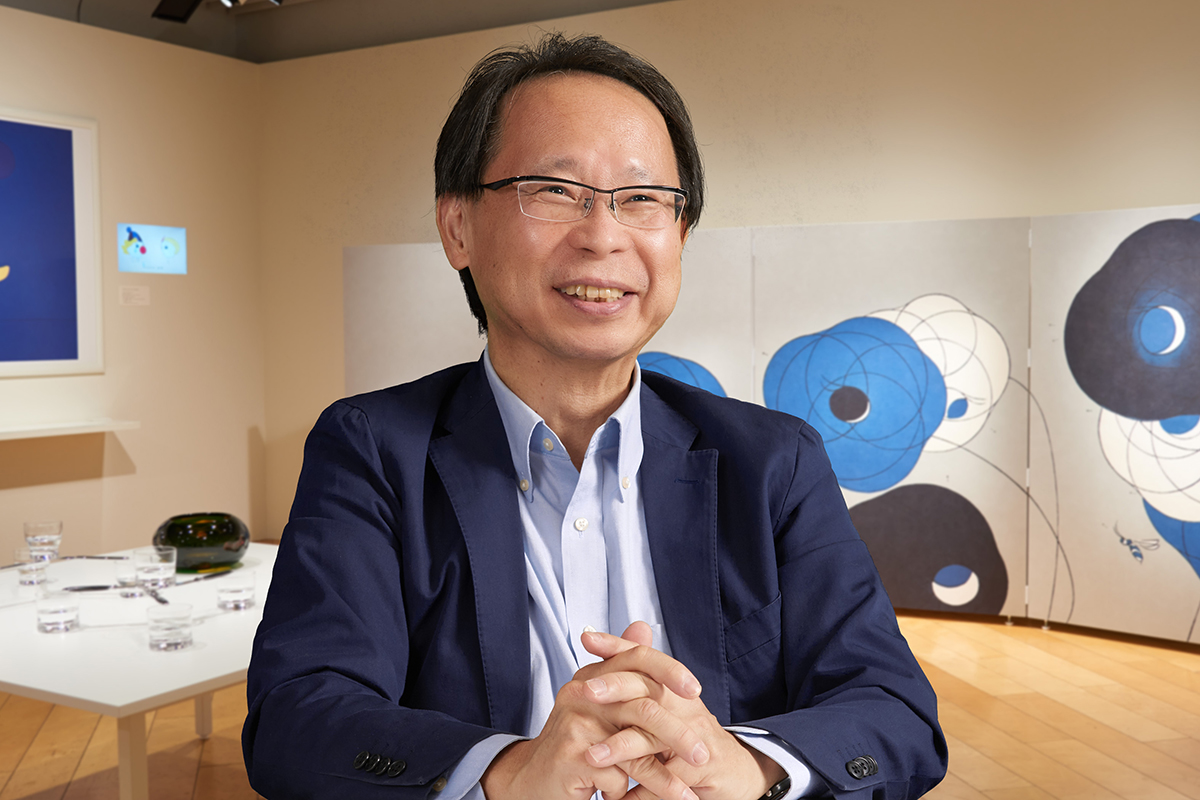
Eishi Kitazawa honed his artistic instincts as a curator while mingling with the likes of Tadanori Yokoo, one of Japan’s leading artists, and such renowned art directors as Eiko Ishioka. Ginza Graphic Gallery (ggg)*1, where Kitazawa has worked for decades, now enjoys a global reputation as the “Mecca of graphic design.” Kitazawa’s mission is to “point to the direction of new design in anticipating the times” and “pass on graphic design*2—which developed alongside the cultures of paper and printing—to future generations.”
- *1ggg, located in Ginza, Tokyo, is operated by DNP Foundation for Cultural Promotion, a public interest incorporated foundation.
- *2Graphic design: A general term to mean visual art expressed mainly by using printing technologies.
Eishi Kitazawa, DNP Foundation for Cultural Promotion
Kitazawa joined Dai Nippon Printing Co., Ltd. (DNP) in April 1980 where he was in charge of planning and making catalogs, calendars and PR magazines at the company’s Creative Design Center (CDC). Since 1990, he has been head curator at ggg while also being committed to the work of DNP Foundation for Cultural Promotion since 2008. He has planned and organized more than 300 exhibitions of artists and organizations in Japan and abroad to date.
Fostering the world’s premier graphic design gallery
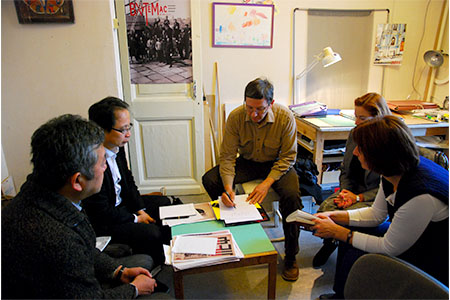
Meeting scene at Rodchenko's atelier
About 10 years ago, Kitazawa was astonished to talk to a Russian who dropped in at ggg and told him, “I’d like to hold an exhibition of my grandfather’s collection here.” The unexpected visitor turned out to be Alexander Lavrentyev, grandson of renowned Russian avant-garde master Alexander Rodchenko, who showed up after hearing ggg’s reputation as a gallery dedicated to graphic design.
Kitazawa subsequently visited Rodchenko’s atelier, preserved in Moscow, and directly negotiated with Lavrentyev. Kitazawa selected 150 graphics, photographs and other works from Lavrentyev’s personal collection. The gallery displayed the works in the exhibition “RODCHENKO -Innovator of Russian avant-garde-” in March 2012.
“Russian avant-garde is an experimental artistic movement that cemented its name in the design history of the 20th Century together with Germany’s Bauhaus movement (which combined crafts and fine arts),” Kitazawa said. “It was a miracle to be able to hold an exhibition of Rodchenko, whose work was much sought after by those in the art and design worlds.” This episode showed how ggg had attained global recognition as a graphic design gallery by then.
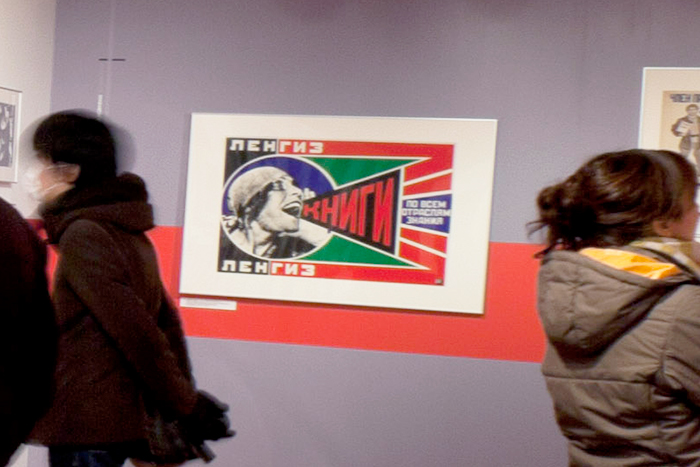
ggg was established by DNP in 1986 as a rare gallery specializing in graphic design, and its operations were later transferred to the DNP Foundation of Cultural Promotion. Kitazawa first became involved in ggg in 1990. The gallery’s identity was developed under its supervisor Ikko Tanaka, a globally renowned graphic designer who proposed the idea of setting up ggg to DNP.
Under the supervision of Tanaka, who valued encounters and interactions with diverse people in different fields, Kitazawa planned and organized exhibitions at the pace of one a month. After Tanaka died in 2002 and Kazumasa Nagai*3 filled his post, Kitazawa maintained the frequency of shows. One of the latest exhibitions, “Saul Steinburg: Lines that Transform the Real World,” in December 2021-March 2022 marked ggg’s 386th exhibition.
- *3Kazumasa Nagai: Born in Osaka Prefecture in 1929, Nagai was a founding member of the Nippon Design Center, together with renowned graphic designer Yusaku Kamekura, in 1960. Nagai designed the emblem of the 1972 Winter Olympic Games in Sapporo, and after receiving a Medal of Honor with purple ribbon from the Japanese government in 1989, he became the chairman of Japan Graphic Design Association Inc. in 1994. Since 2002, he has been supervising special exhibitions at ggg.
Kitazawa learned about what it means to operate the gallery in a more profound sense from something Tanaka said: “I regard a gallery as a ‘windhole’ that connects a company with the public. If the gallery is curated resolutely and the atmosphere of the space gently envelops people, the wind blows in briskly from the window.” Artists selected for exhibitions at ggg include masters of the 20th Century and up-and-coming graphic designers from Japan and abroad, including Bruno Munari, Paul Rand, Henryk Tomaszewski, Yusaku Kamekura, Yoshio Hayakawa and Shigeo Fukuda.
Kitazawa has made it a point to meet the artists in person and engage in dialogue with them. He said he has been impressed by their lofty aspirations every time meeting them.
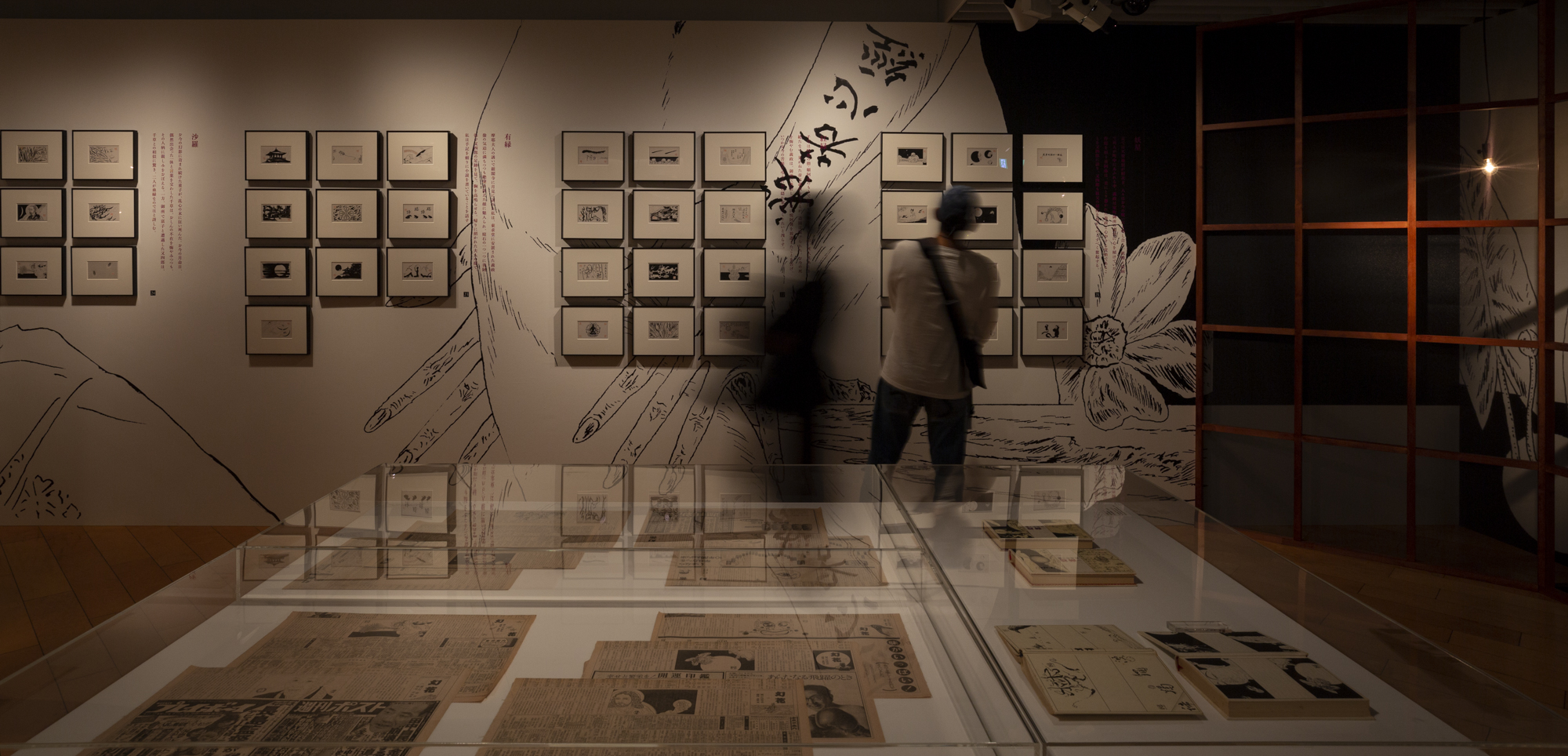
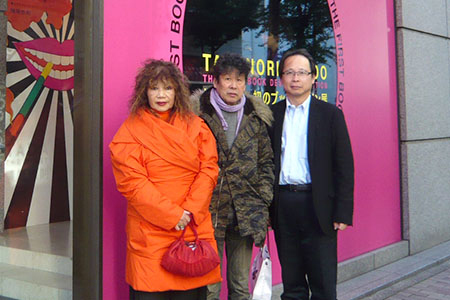
Mr. Kitazawa with Mr. and Mrs. Yokoo
Kitazawa is still on friendly terms with Tadanori Yokoo, who has been featured in several exhibitions at ggg, and often takes walks with him. Asked about how to build friendly relations with graphic designers, Kitazawa answered the secret is “never say no,” as well as thoroughly studying the artists before meeting them.
“Even when the artist makes a request that I find difficult to comply with, I will think about how I can grant it, instead of thinking about reasons why I can’t do it or saying ‘I will consult with my boss later,’” he said. “I will try to expand ideas with the artist at the meeting. It is a high-risk, high-return method, but my positive, optimistic approach of ‘let’s solve the problem together,’ ‘let’s achieve it by any means,’ or ‘let’s make it enjoyable and fun’ has won the trust of many artists.”
Kitazawa likens this way of associating with the artists to the hard work that has been done in collaboration between graphic designers and printing directors (or present-day woodblock printers), which has led to the advancement of printing technologies.
“Overcoming one barrier after another with the artists, we have been able to put on exhibitions that have the power to move people,” Kitazawa said.
Legacy of print culture shines on in digital era
The future of graphic design is not all that rosy, Kitazawa acknowledges. One of his concerns is a shift from analog methods—which made paper viable as an art material thanks to printing technologies such as lithography and silk-screen printing—to digital ones.
From Kitazawa’s perspective, the peak of Japan’s graphic design in poster arts came in the 1980s when it started attracting global attention, but after Japan’s economic bubble burst in the 1990s, an era known as the “lost two decades” of sluggishness in the Japanese economy and society ensued. During the stagnant period, a wave of digitalization grew, sidelining culture of print media such as posters and magazines, he said.
“Designers in the analog era invented various shapes, including fonts, in accordance with their themes at a time when the available options were limited,” he said. “But in the age of digitalization, while designers have far wider options, they often choose the existing fonts and shapes available on a computer. So, the resultant designs tend to be similar. In particular, unless further novelty is woven into the digital expression methods in making paper posters, few eye-opening, original designs can be expressed.
“To create truly original art pieces, it is essential to delve more deeply into what design is all about or what design is supposed to express—be it digital or analog. Fortunately, however, we are witnessing the rise of a new generation of graphic designers who inherited the legacy of past graphic designs and are opening their own frontiers in expression.”
Kitazawa learned about the significance of creating something “never seen before” from Eiko Ishioka, winner of the Academy Award for Best Costume Design and Grammy Award for Best Recording Package who was based in New York City until her death in 2012.
Kitazawa got to know Ishioka when he negotiated with her for more than six months in 2000 about featuring her in a book as part of the “World’s Graphic Design series, ggg Books*4.” After a deal for the publication was sealed, Ishioka briefly visited Tokyo and took part in the book-making process. Then, Kitazawa witnessed how Ishioka, known as a perfectionist, put her heart and soul into her contributions to page layouts and contents of the book.
Ishioka is credited for creating groundbreaking images of women in her advertisement work for cosmetics brand Shiseido and the PARCO department store chain, in addition to graphic arts and woodblock prints for a Francis Ford Coppola movie, a poster for a World Exposition and a wide variety of other publicity materials. In summary, she sparked innovations in such diverse arenas as performance stage, costume and graphics design with an ingenuity that captivated the masses.
- *4World’s Graphic Design series, ggg Books (published by DNP Foundation for Cultural Promotion): A book series with each containing a Japanese or foreign designer’s selected works in a compact manner.
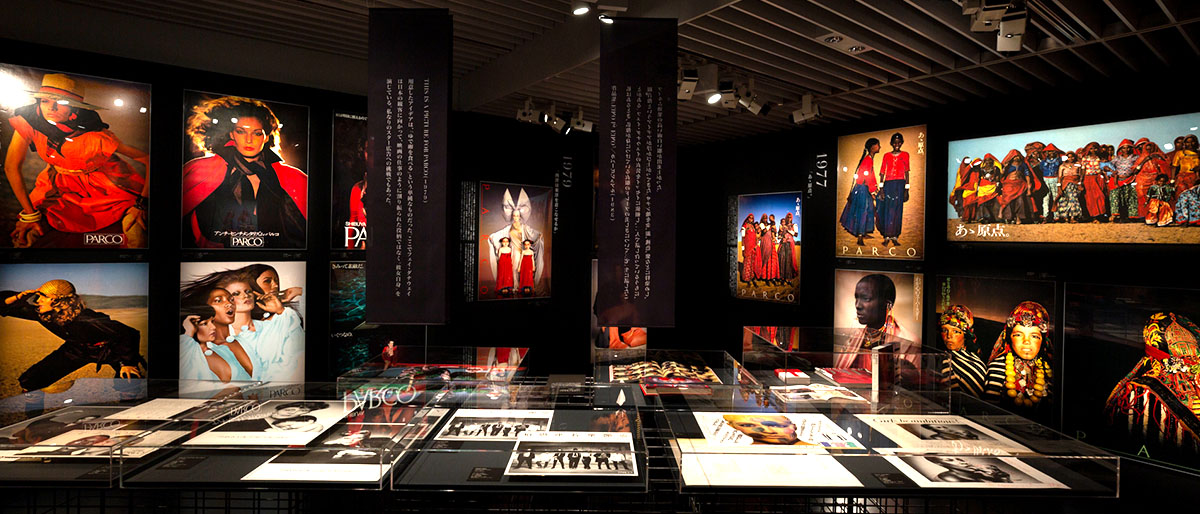
Kitazawa fears the burning ambition to create something never seen before might be fading in the world of graphic design. Kitazawa, therefore, believes it is ever more important to showcase the legacy of past graphic designers for younger generations. Because of this sense of crisis, Kitazawa organized an exhibition titled “SURVIVE - EIKO ISHIOKA” from December 2020 to March 2021, which, he said, was the result of numerous enthusiastic stakeholders’ cumulative efforts. The exhibition attracted a record number of visitors to ggg despite being held during the COVID-19 pandemic.
Desire for deep connection on mass scale
In addition to the concept of “never seen before” that he learned from Ishioka, Kitazawa values three other points as a curator: “How to interpret the age in which we are living,” “the soundness of the works” and “the spirit of experimentation, critical mind and humor.”
Kitazawa habitually prepares himself to readily answer the question of why ggg is holding a particular exhibition now, which can be said an effort to interpret the age we are living in. Doing so requires him to have not only specialist knowledge of design, art history, space design and visual perception theories, but also interests in anthropology, sociology, economics, media, communication and other far-reaching areas.
Regarding selecting works for exhibitions, he said: “As graphic design is essentially supposed to energize people who are seeing it, I want the medium to help solve social ills, even if just a little bit.” As for the last point he values, he cited the example of Rodchenko, who suddenly gained a prominence during the 1917 Russian Revolution and exercised the spirit of experimentation. Another example is Raymond Savignac, a French painter who healed the heart of exhausted Parisians during World War II. “I’d like to provide a venue to stir up such spirits,” he added.
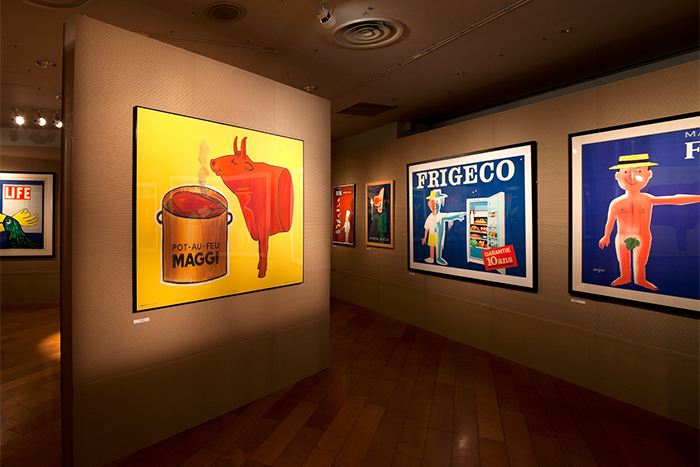
Kazumasa Nagai, ggg’s supervisor, says of Kitazawa’s work, “His proposals for exhibitions featuring graphic designers across the globe are well-thought-out and resonate with the contemporary world. They include designers who I wouldn’t have thought of. In each proposal, he envisions how to stimulate people living in this era by holding the exhibition now and connect them to the future.”
Kitazawa described his mission as a connoisseur of graphic design. “Curation is ultimately to convey my deep emotions about artworks and share them with as many people as possible,” Kitazawa said. “Due to my limited ability, there have been many cases in which I failed to realize exhibitions in the way I had intended. But I’d like to convey the excellence of design and graphic arts—which can fill people’s hearts with joy, stir up deep emotions in them and even change their philosophies about life—to future generations via exhibitions.”
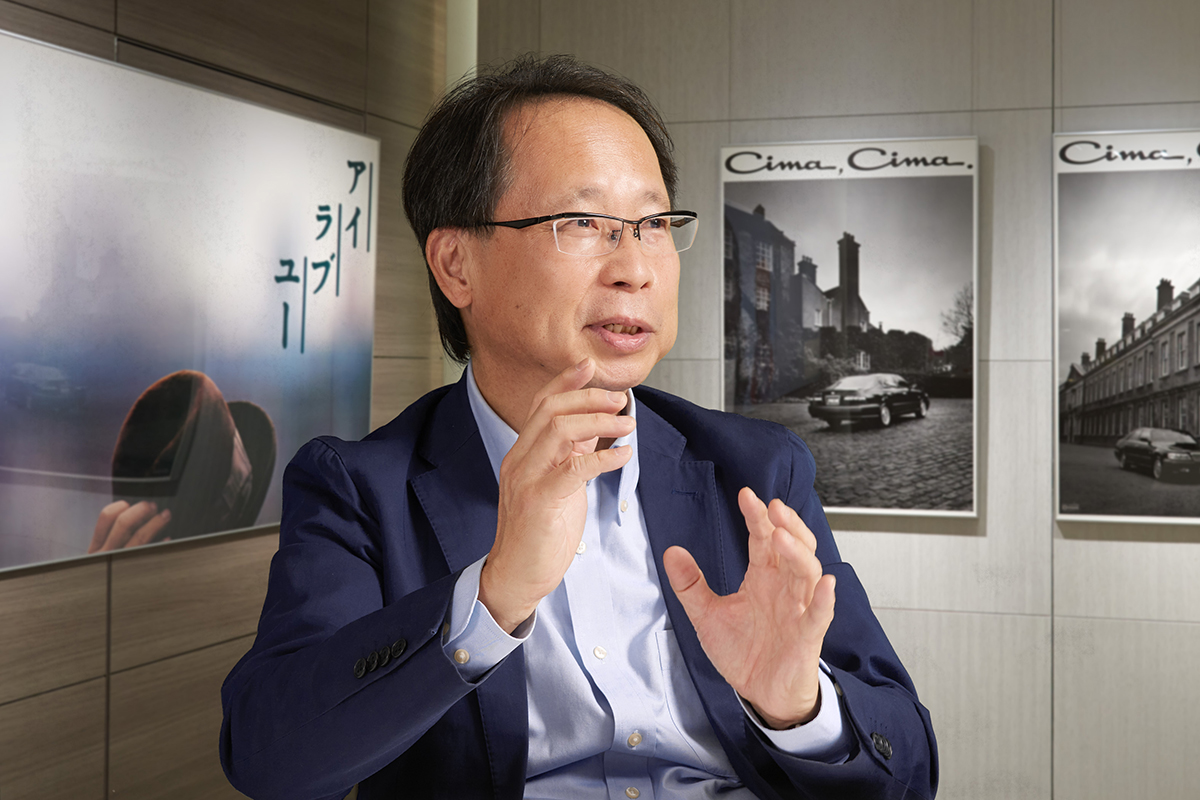
- ※The photos of the 299th, the 307th, the 368th, the 381th, and the 384th exhibition were photographed by Mitsumasa Fujitsuka.